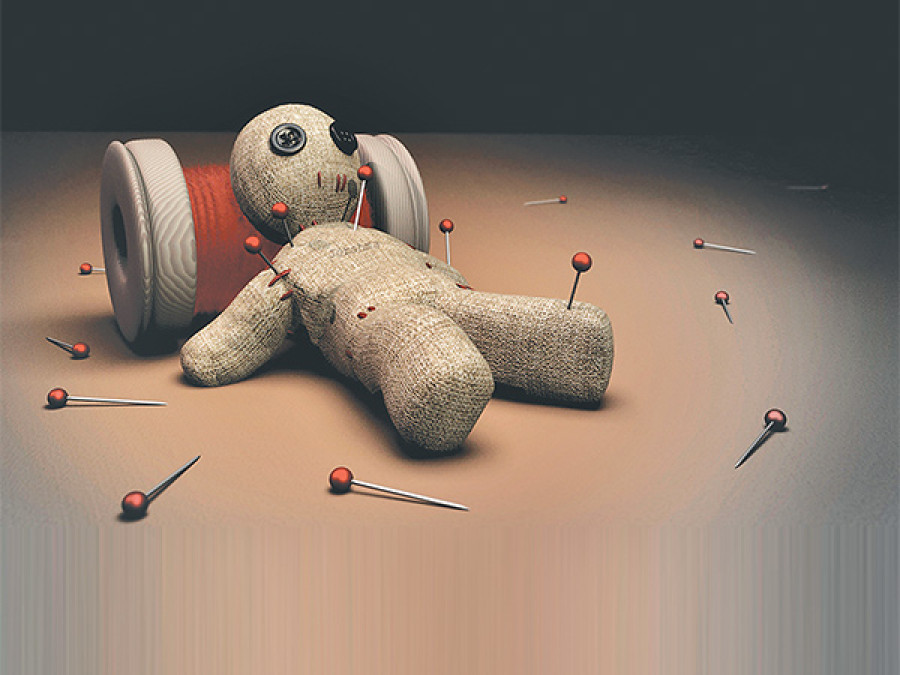Entertainment
Of fear
There was a fear in everyone’s mind. Did someone do something wrong to her? Was the girl too terrified to say anything to anyone?
Bikash Gupta
My home district Siraha was surprised when Kollywood’s heartthrob Rajesh Hamal posted an unusual status on Facebook—irking most of his fans apparently—when he wrote that he was embarrassed to be a Nepali for the first time in his life. He had not added any further description in his status, the vagueness of which momentarily fuelled rage among all Nepalis. However, when he explained that he had written so, because of the frustration over failure of convincing the “higher class” people to let “lower class” people fill their water from a neighbouring well, the social-media came to support him.
This news tentatively provides an idea about how largely uneducated and superstitious Siraha is and that how “legal systems” are still not practiced in Siraha.
In comparison to Kathmandu, Siraha is a completely different world. Kathmandu is dense and urban whereas Siraha is relaxed and rural. Siraha Bazaar, where I grew up, is the head-quarter of the district but it misses the city dweller’s typical stereotypes of mid-size town. The Bazaar is extended in less than two kms and has nothing much to offer, except a bookless library, a one doctor hospital, a basically dysfunctional municipality and an overcrowded CDO office, where tens of hundreds youth, some as young as 14, queue up under the scorching sun to ready their passports for Gulf countries. After these places, there is one new municipality and more than a hundred VDCs where people are still largely cut-off from basic amenities like electricity and education.
A few days ago, for example, the sound of a crying woman disrupted a conversation my mother and I were having. Alarmed, my mother stood up to find where the nervous cries were coming from. After a little inspection, she found the woman, supposedly in her mid-thirties, weeping near our house sitting with a girl. Hurriedly my mother went up to her and asked why she was crying so frantically. The woman, unable to maintain her composure as tears jerked off her eyes, accounted in a fragmented version, often punctuated by deep sobbing and pauses, how her barely teenage daughter had developed a swollen belly and how a Dhami brushed her off saying that there was now no hope for a treatment. We became hopeless, at first, seeing the sheer desperation in their eyes but then instantly buoyed her and told her not to believe in Dhamis and Jhankris and advised her to take her daughter to a good hospital in Biratanagar (the only Hospital in Siraha was out of a doctor). It took us more than an hour and active volunteerism to dissipate the overwhelming crowd and instil in her that things will be perfectly fine.
There was a fear in everyone’s mind. Did someone do something wrong to her? Was the girl too terrified to say anything to anyone? Was the mother-daughter duo too scared to say anything because of the society? We have been programmed to think that way these days and get devoured by fear – thanks to growing social evils. The problem, which turned out to be just a harmless and curable disease, was consumed by fear.
Siraha has a sorrowing story of fear. There is just too much fear with simply no any outlet. How can there be? The education is out-dated—a high rate of illiteracy, a high number of drop-outs and poor citizens looking for jobs to survive. How long this has been going for? Time immemorial. What has fear done during all this time? Eaten our conscience; given rise to unreasonable immutable thoughts.
Local political mudslinging had done no good to Siraha either. Years of failed bureaucracy has resulted in no change in the living standard of people. People in my father’s village Sarsawar, not far away from Siraha Baazar, still continue to live with little opportunities to. There has been a change, but just one brought out by time, not by meaningful government interventions.
Fear runs in the veins. Venture into one of the inner villages in the district, you will find nothing besides thatched, mud houses and hungry drop-outs or never-been-to-school kids. The poor do not even have houses and are forced to sleep under the open sky or under tents, made of stitched clothes that cannot even ward off rain or wind.
These people survive on fishing and other discrete, menial jobs. They are at the lower ranks ofethnic, political, economic and social statuses. They are the so-called lower-caste people.
We say we are in the 21st century, yet our thinking does not reflect it. We are still stuck in the same place, with fear in our hearts.




 8.12°C Kathmandu
8.12°C Kathmandu










